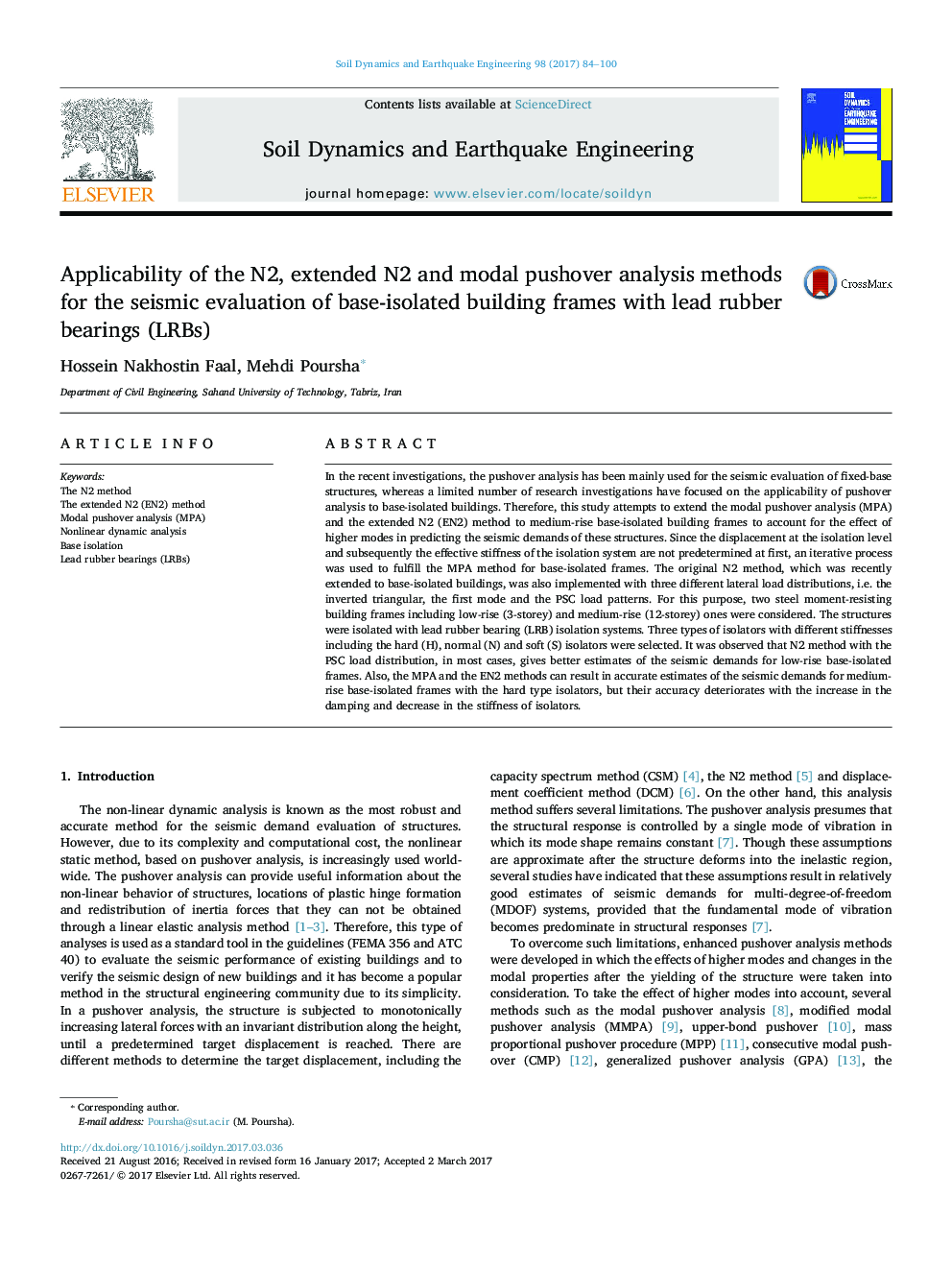| Article ID | Journal | Published Year | Pages | File Type |
|---|---|---|---|---|
| 4927089 | Soil Dynamics and Earthquake Engineering | 2017 | 17 Pages |
Abstract
In the recent investigations, the pushover analysis has been mainly used for the seismic evaluation of fixed-base structures, whereas a limited number of research investigations have focused on the applicability of pushover analysis to base-isolated buildings. Therefore, this study attempts to extend the modal pushover analysis (MPA) and the extended N2 (EN2) method to medium-rise base-isolated building frames to account for the effect of higher modes in predicting the seismic demands of these structures. Since the displacement at the isolation level and subsequently the effective stiffness of the isolation system are not predetermined at first, an iterative process was used to fulfill the MPA method for base-isolated frames. The original N2 method, which was recently extended to base-isolated buildings, was also implemented with three different lateral load distributions, i.e. the inverted triangular, the first mode and the PSC load patterns. For this purpose, two steel moment-resisting building frames including low-rise (3-storey) and medium-rise (12-storey) ones were considered. The structures were isolated with lead rubber bearing (LRB) isolation systems. Three types of isolators with different stiffnesses including the hard (H), normal (N) and soft (S) isolators were selected. It was observed that N2 method with the PSC load distribution, in most cases, gives better estimates of the seismic demands for low-rise base-isolated frames. Also, the MPA and the EN2 methods can result in accurate estimates of the seismic demands for medium-rise base-isolated frames with the hard type isolators, but their accuracy deteriorates with the increase in the damping and decrease in the stiffness of isolators.
Related Topics
Physical Sciences and Engineering
Earth and Planetary Sciences
Geotechnical Engineering and Engineering Geology
Authors
Hossein Nakhostin Faal, Mehdi Poursha,
